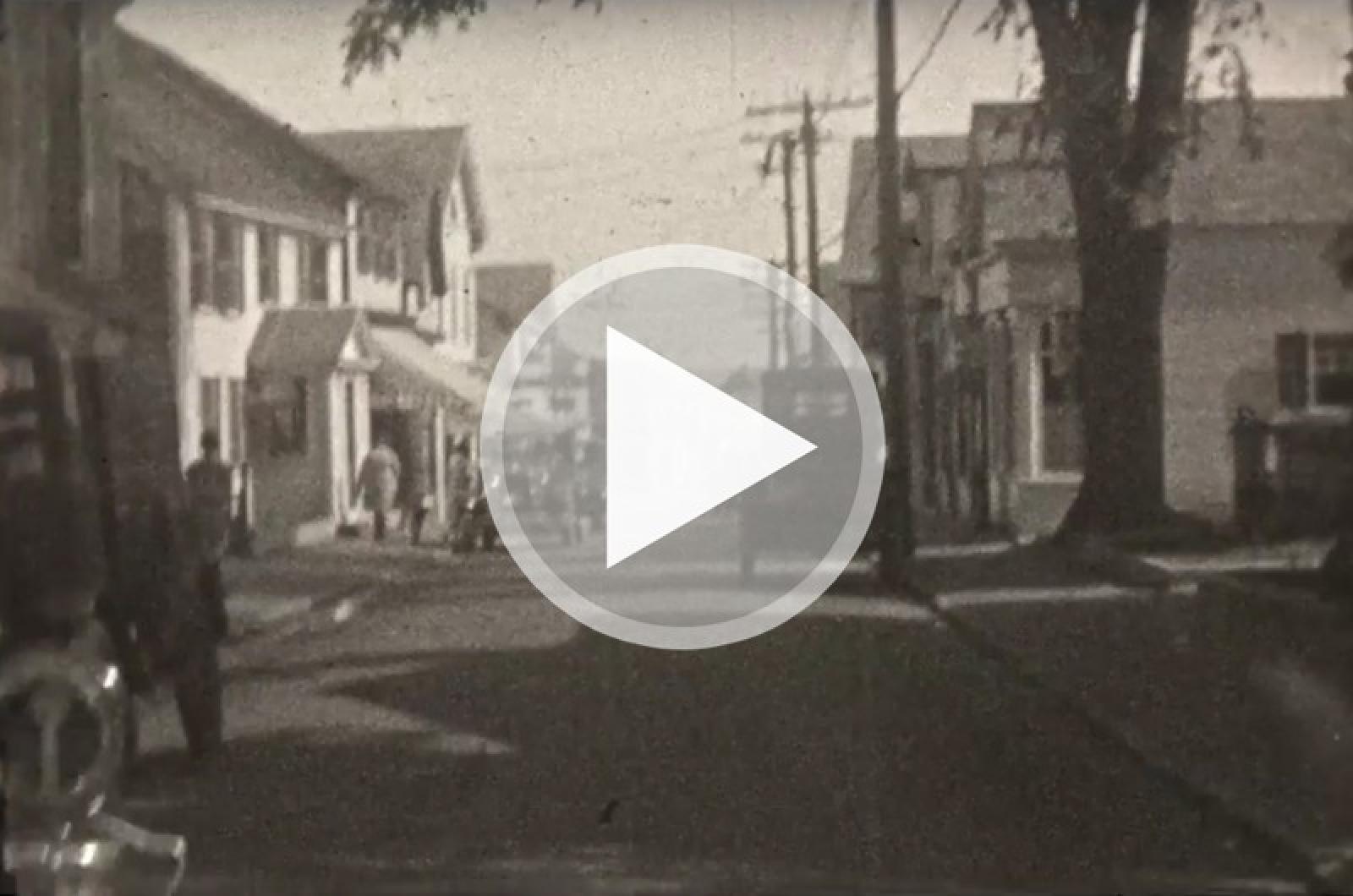The movie of Edgartown jounces and weaves down Main street, the camerawoman shooting from the front seat of a car whose hood ornament sparkles under the sun. It’s a summer day 91 years ago, at a moment in history that marks the start of modern Island resorthood.
Filmed in 1925, this may also be the earliest motion picture footage ever shot in Edgartown and along its waterfront. To date it is the oldest that has been found.
The footage comes from 31 reels, each about a minute long and photographed in the middle to late 1920s. The filmmakers were Clara F. Dinsmore and her brother William, who had been visiting Edgartown since the turn of the century and who later lived there year-round, until their deaths in the 1970s.
Bill Dinsmore was 23 and Clare, as she was known, just 17 when they shot the film presented now as part of its Historic Movies of Martha’s Vineyard project.
The project began in the fall of 2013 as an effort to save old movies of the Island and show them to a contemporary audience.
The Dinsmore expedition through town, all of it filmed through the windshield, begins at the intersection of Main and Summer streets, bumps silently down the road to Water street, where car and camera turn left. The film then travels north to the vicinity of the Harbor View Hotel before turning around and starting back the other way.
Roads, buildings and many of the houses are immediately recognizable nearly 100 years after the Dinsmores shot their film. Then automobiles and Model T pickup trucks could travel in both directions on Main and Water streets and park on either side of both.
Blurry figures, the women in dresses and the men in neckties, amble along the roads and lanes on outings and errands. One lady holds the hand of a toddler at the top of Daggett street; a man is glimpsed beating a rug on a lawn near the walkway down to the lighthouse. Filmed nearly five generations ago, they would have had memories extending back to Reconstruction and some of them perhaps even to the Civil War.
The clip is narrated by S. Bailey Norton Jr. of Edgartown, who was five years old at the time the film was shot. A 10th-generation Vineyarder, his ancestral line stretching back to the time of Edgartown settlement, Mr. Norton easily recalls businesses seen in the movie, including the Red Men’s Hall, where dances were held on Main street, and Napoleon J. Berube’s market, housed in the building at Four Corners now occupied by the Santander Bank.
As the car and filmmakers head north on Water street, he recalls a street still paved with scallop shells in his boyhood. “It was quite nice,” he says. “You know, in the summer the shells were white. It was kind of messy in the winter and the spring, because you opened the scallops and the guts and everything would go in with the shells. Then they might spread them a foot deep on the street. Gradually they’d get crushed up.”
In the film, North Water street does not look paved in scallop shells, but from the way the car bounces, it hardly feels as though the streets have been paved by anything at all.
Mr. Norton also recalls an example of old-world deference in which year-rounders walked on the harbor front side of Water street, which lacked much of a sidewalk, so that summer people could enjoy the landward side, which did. For archival purposes, H. Thomas Fisher, well versed in town history, identified the owners of many of the houses seen in the film and told stories about what happened to their families in later years.
Clare Dinsmore would become a professional photographer and a national champion sailboat racer. Bill Dinsmore, also known as Dinsy, taught harmony and counterpoint at The Juilliard School in New York city and was both a composer and concert pianist. They owned homes on North Water street and down harbor. Late in life Mr. Dinsmore moved to Edgartown year-round. The siblings loved the town and in both cases their deaths were front-page news.
They shot on 9.5-millimeter Pathex film, a European stock, which wound up in the hands of Mr. Dinsmore’s step-daughter, Chantal Hodges of Manhattan and Edgartown. Stored in an attic for more than 40 years, enduring temperatures that may have swung as much as 100 degrees from summer to winter, the movies remained in good condition when transferred by Northeast Historic Film, a conservation group in Bucksport, Me., which now owns the original reels. From several of them, John Wilson of Edgartown edited the clip presented here.
The collection records scenes all along the Edgartown waterfront, including shots of the sidewheeler Uncatena tied up at what is now Memorial Wharf, Osborn’s Wharf before the Edgartown Yacht Club was built upon it, and the Chappaquiddick ferry when it was still a skiff rowed by Jimmy Yates in vest and boutonnière.
There are also scenes of a fisherman at South Beach casting with a hand line in the period before spinning rods and also several short reels of a huge dredge digging a channel through East Beach on Chappaquiddick, where the jetties, a popular surf-casting location today, would later be built.
The Dinsmore films are the second oldest collected to date by the Gazette’s historic movies project. Footage for the short theatrical film Annabelle Lee, showing scenes of Menemsha, Gay Head and West Chop, was shot in the fall of 1920.
The Historic Movies of Martha’s Vineyard project saves, archives and introduces old Island films to the public. To see the collection of 14 Vineyard films presented to date, go to vineyardgazette.com/historicmoviesofmarthasvineyard. For information about the project, contact historicmovies@mvgazette.com. (To avoid damage, please do not run old films through a projector.)







Comments (11)
Comments
Comment policy »